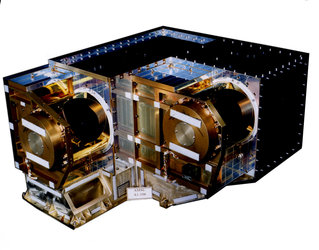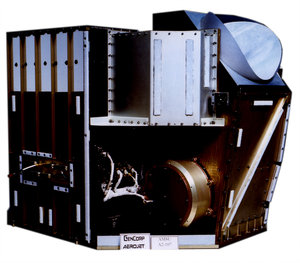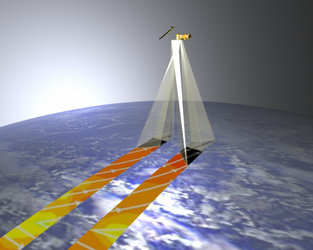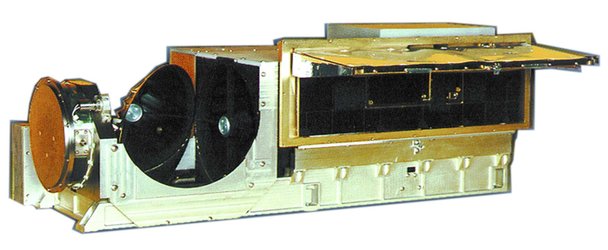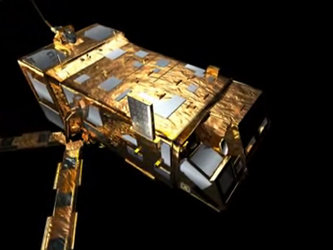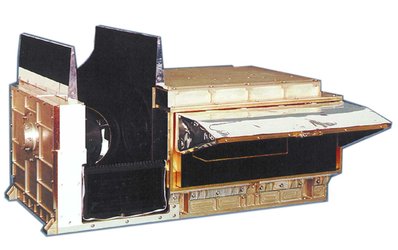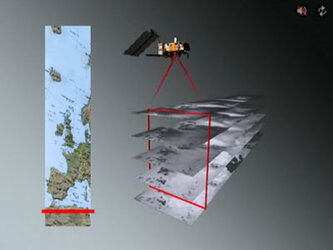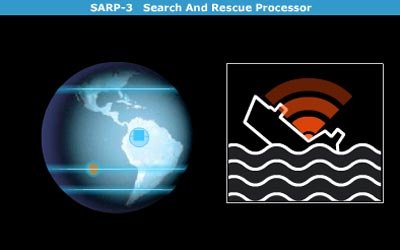MHS performance
The following table shows the performance information for the MHS instrument.
| CH 1 | CH 2 | CH 3 | CH 4 | CH 5 | |
|---|---|---|---|---|---|
|
Channel centre freqency (GHz) |
89.0 | 157.0 | 183.311 ±1 | 183.311 ±3 | 190.31 |
|
Channel centre frequency stability (MHz) |
-0, +7 | -40, +34 | -27, +18 | -27, +18 | -5, +36 |
|
Channel bandwidth (GHz) |
<2.8 | <2.8 | <1.0 | <2.0 | <2.2 |
|
Temperature sensitivity (K) |
0.22 | 0.52 | 0.24 | 0.21 | 0.57 |
|
Absolute calibration accuracy (K) |
0.42 | 0.24 | 0.16 | 0.42 | 0.29 |
| Polarisation | V | V | H | H | V |
|
Beam efficiency (%) |
94.6 | 99.0 | 95.4 | 95.4 | 94.9 |
|
Beamwidth (degrees) |
1.12 | 1.17 | 1.02 | 1.02 | 1.05 |
|
Beam pointing (degrees) |
0.01 | 0.01 | 0.01 | 0.01 | -0.02 |
|
Cross polarisation (%) |
1.2 | 0.6 | 3.5 | 3.5 | 1.9 |
| Linearity | 0.3K |
|---|---|
| Scan motion | Scan Mode or Fixed View |
| Scan period | 2.67 (8/3) seconds (Scan Mode only) |
| Viewing widths | Earth view 90 pixels / calibration views 4 pixels each |
| Mass of MHS | <66 kg |
| Power consumption of MHS | <95 W |
Quick and easy guide to some of the terms used
Temperature sensitivity (K) – Kelvin,
- 0 Kelvin = -273 Degrees Centigrade (i.e. Absolute zero temperature)
- 273 Kelvin = 0 Degrees Centigrade
The temperature sensitivity determines the minimum change of temperature that can be detected. For example: for a one degree sensitivity, a change of one degree is necessary in order for it to be detected.
Absolute calibration accuracy (K)
The accuracy of the sampled data after it has been corrected for drift and temperature effects, by the use of the Hot and Cold Target data.
Polarisation – V = Vertical and H = Horizontal
The Earth emits Electromagnetic Radiation over a wide frequency band, from UV to far Infra-Red in all planes; i.e. the radiation of any particular wave can be vertical, or horizontal, of any angle in between. The MHS Instrument selects particular polarisations for each channel to optimise the data obtained. Waves received that are not in the selected polarisation (i.e. cross polarisation) will be largely rejected.
Bandwidth (GHz)
–3dB (or half power points) either side of the centre frequency of the channel define the Bandwidth (BW) i.e. the BW = Upper half-power-point frequency minus Lower half-power-point frequency. The Bandwidth is largely determined by the quasi optics and filters.
Beamwidth (degrees)
–3dB (or half power points) that define the viewing angle seen by the instrument. Here, 1.1 degrees is equivalent to looking at a 16 km diameter disc on the Earth's surface. The Beamwidth is determined by the reflector design and construction.





